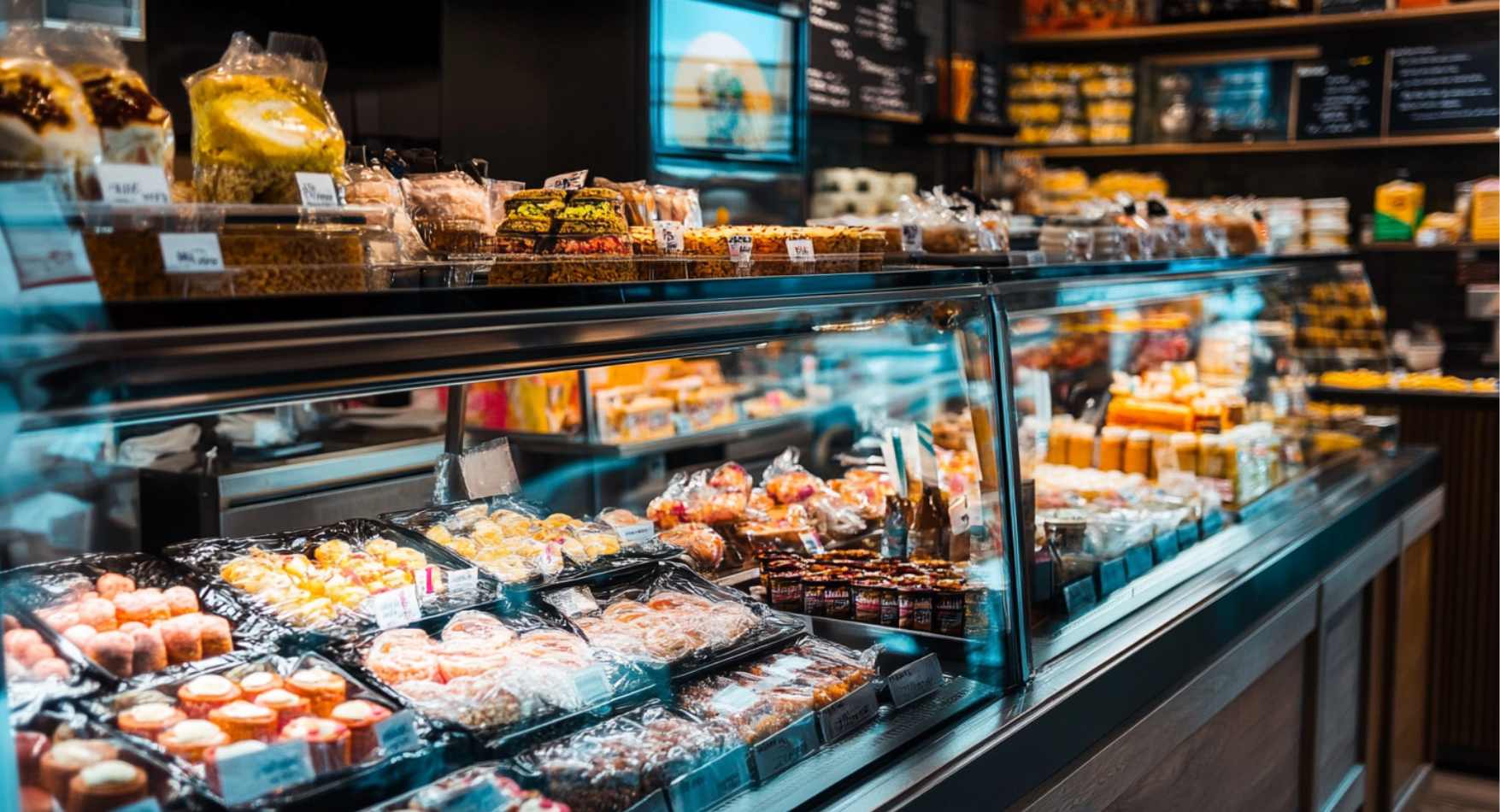Ever thought about what food entrepreneur ideas could change the way we eat?
Think about ideas like hyper-personalized nutrition plans, AI-driven meal kits, or vertical farming in cities. These ideas use new technology and smart thinking to make food better and more personal. Whether it’s creating plant-based seafood or using blockchain for food traceability, the goal is to find new ways to meet people’s needs and make eating more exciting and sustainable.
When picking a food business idea, remember to focus on what people really need and what makes your idea special. Don’t just follow trends; think about how you can make a real difference in the food world. This way, you can build a business that lasts and makes people happy.
1. Hyper-Personalized Nutrition Plans
Hyper-personalized nutrition plans are more than just a trend; they’re a necessity in today’s health-conscious world. To succeed, you must go beyond generic dietary advice and leverage data-driven insights. Utilize genetic testing, microbiome analysis, and AI algorithms to create truly personalized plans. The common mistake is underestimating the complexity of individual dietary needs. Avoid this by investing in robust data collection and analysis tools. To uncover blue ocean opportunities, consider targeting niche markets like athletes, pregnant women, or individuals with specific health conditions. Collaborate with healthcare providers to add credibility and reach. Remember, the key is not just personalization but also scalability. Develop a platform that can handle a large volume of clients without compromising on the quality of personalization.
2. AI-Driven Meal Kit Subscriptions
AI-driven meal kit subscriptions can revolutionize how people cook and eat at home. The challenge is differentiating from existing players. Use AI to predict customer preferences and dietary needs, offering a truly customized experience. A common pitfall is focusing too much on technology and not enough on the culinary experience. Ensure your meal kits are not only convenient but also delicious and diverse. To stand out, consider integrating sustainability by using locally sourced ingredients and eco-friendly packaging. Explore partnerships with local chefs to create exclusive recipes. The real opportunity lies in creating a seamless, enjoyable cooking experience that feels personal and thoughtful, not just automated.
3. Vertical Farming for Urban Areas
Vertical farming in urban areas is a promising venture, but it’s not without challenges. The key to success is optimizing space and energy use. Many entrepreneurs fail by not fully understanding the technological and logistical demands. Invest in advanced hydroponic or aeroponic systems to maximize yield. To find blue ocean opportunities, focus on underserved urban areas with limited access to fresh produce. Collaborate with local governments and community organizations to secure funding and support. Consider offering educational programs to engage the community and build a loyal customer base. The goal is to create a sustainable, profitable model that can be replicated in other urban centers.
4. Plant-Based Seafood Innovations
Plant-based seafood is an emerging market with significant potential. The challenge is replicating the taste and texture of real seafood. Invest in R&D to develop products that can compete with traditional seafood in flavor and nutrition. A common mistake is neglecting the environmental impact of ingredients used. Ensure your supply chain is sustainable and transparent. To uncover blue ocean opportunities, target regions with high seafood consumption but limited access to sustainable options. Collaborate with chefs and restaurants to introduce your products to consumers. The key is to position your brand as a healthier, environmentally friendly alternative without compromising on taste.
5. Blockchain for Food Traceability
Blockchain technology can transform food traceability, offering transparency and trust to consumers. The challenge is integrating blockchain into existing supply chains. Start by identifying key pain points in traceability and develop a solution that addresses them. A common mistake is overcomplicating the technology, making it inaccessible to stakeholders. Focus on creating a user-friendly interface that simplifies data access and interpretation. To find blue ocean opportunities, target industries with complex supply chains, such as seafood or organic produce. Partner with regulatory bodies to ensure compliance and build trust. The goal is to create a system that not only tracks food origins but also enhances safety and quality assurance.
6. Edible Insect Protein Products
Edible insect protein is a growing trend, but it’s not for everyone. If you’re thinking about starting a business in this area, focus on education. Most people are not used to eating bugs, so you’ll need to show them why it’s a good idea. Highlight the health benefits and environmental impact. Make sure your products taste good and look appealing. Common mistakes include not understanding your target market and failing to create a strong brand. To stand out, consider unique flavors or combining insect protein with other popular health foods. Look for blue ocean opportunities by targeting niche markets like athletes or eco-conscious consumers. Remember, it’s not just about selling a product; it’s about changing perceptions.
7. Zero-Waste Grocery Stores
Zero-waste grocery stores are all about reducing waste, but they can be hard to run. The key is to make it easy for customers to shop without packaging. Offer bulk bins and encourage people to bring their own containers. A common mistake is not having a clear system for how customers can shop waste-free. To succeed, focus on community building and education. Host workshops and events to teach people about zero waste. To find a blue ocean, consider offering delivery services or partnering with local farms. Make sure your store is a place where people want to spend time, not just shop. This will help you build a loyal customer base.
8. Smart Kitchen Appliances for Health
Smart kitchen appliances are cool, but they need to be useful. If you’re creating a product in this space, focus on solving real problems. Think about how your appliance can make cooking healthier or easier. A common mistake is making something too complicated. People want simple solutions. To stand out, consider integrating your appliance with popular health apps or offering personalized cooking tips. Look for blue ocean opportunities by targeting specific health needs, like appliances for people with dietary restrictions. Remember, your product should make life better, not just add another gadget to the kitchen.
9. Fermented Foods with a Twist
Fermented foods are popular for their health benefits, but the market is crowded. To succeed, you need to offer something different. Think about unique flavors or combining fermentation with other food trends. A common mistake is not understanding the fermentation process well enough, leading to inconsistent products. To stand out, focus on quality and transparency. Educate your customers about the benefits of fermentation and how your product is made. Look for blue ocean opportunities by targeting specific dietary needs or creating products for kids. Remember, your product should be both tasty and healthy.
10. Virtual Reality Dining Experiences
Virtual reality dining is a new and exciting idea, but it’s not easy to pull off. The key is to create an experience that people can’t get anywhere else. Think about how you can use VR to enhance the dining experience, not just as a gimmick. A common mistake is focusing too much on the technology and not enough on the food. To succeed, partner with great chefs and focus on creating a memorable experience. Look for blue ocean opportunities by targeting special occasions or corporate events. Remember, people are paying for an experience, not just a meal.
What are some innovative food entrepreneur ideas?
Some innovative ideas include plant-based meal kits, personalized nutrition plans, and zero-waste grocery stores.
How can I start a plant-based meal kit business?
Research your target market, source quality ingredients, create a menu, and develop a subscription model.
What is a personalized nutrition plan?
A personalized nutrition plan is a diet tailored to an individual’s specific health needs and preferences.
How do zero-waste grocery stores operate?
They focus on reducing packaging waste by offering bulk items and encouraging customers to bring their own containers.
What are the benefits of starting a food truck business?
Lower startup costs, mobility, and the ability to test different locations and menus.
How can technology be used in food entrepreneurship?
Technology can be used for online ordering, delivery apps, and managing inventory and customer data.
What is a ghost kitchen?
A ghost kitchen is a professional food preparation facility set up for delivery-only meals, without a dine-in option.
How can I promote my food business online?
Utilize social media, create engaging content, collaborate with influencers, and optimize your website for search engines.
What are some sustainable practices for food businesses?
Using local and organic ingredients, reducing food waste, and implementing eco-friendly packaging.
How can I differentiate my food business from competitors?
Focus on unique offerings, exceptional customer service, and building a strong brand identity.







